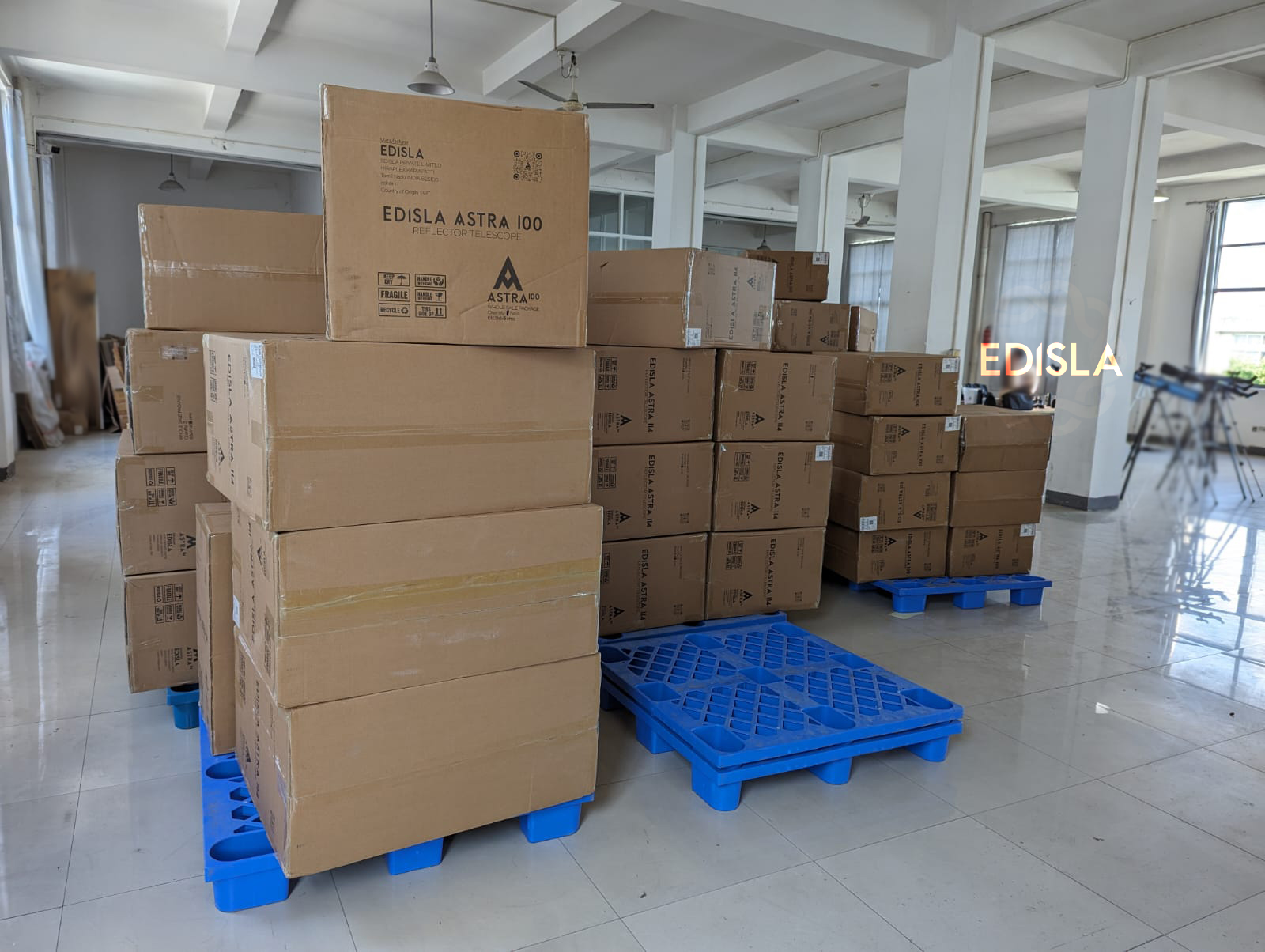The Ultimate Guide to Dedicated Astrophotography Cameras
The Ultimate Guide to Dedicated Astrophotography Cameras: 2025 Edition
Astrophotography has never been more exciting—or more confusing. With cameras from ZWO, QHY, Player One, Touptek, and more, all using Sony sensors, choosing the right camera can feel overwhelming. In this ultimate guide, we’ll break down everything you need to know: sensor sizes, pixel resolutions, cooled vs uncooled cameras, monochrome vs color, and real-world tips for beginners and pros alike.
A Brief History: From CCDs to CMOS Domination
A decade ago, your choices were limited:
-
Cooled CCDs
-
Modified DSLRs
-
Early CMOS sensors
CMOS cameras back then were plagued with noise, low sensitivity, and uneven image quality.
Enter Sony IMX sensors:
-
Lower noise
-
Faster readout speeds
-
Affordable prices
This shift opened the floodgates, leading to today’s camera lineup:
-
ZWO – user-friendly ecosystem with ASI cameras and ASI Air integration
-
QHY – high-quality, professional-grade cameras
-
Player One & Touptek – budget-friendly options
Now, CMOS reigns supreme, and CCDs have quietly stepped aside.
Key Specs That Matter in Astrophotography Cameras
Resolution: How Many Megapixels Do You Need?
More megapixels don’t always equal sharper images. High-resolution sensors like the ASI 2600 (26MP) are ideal for long focal lengths and stable skies, while smaller sensors like the ASI 533 can outperform under average seeing conditions.
Pro tip: Match your camera resolution to your telescope’s focal length and sky conditions.
Pixel Size: Big vs Small Pixels
Pixel size determines how much light each pixel collects:
-
Large pixels (4.6–5.8μm) – forgiving, ideal for faint nebulae and long exposures
-
Small pixels (2.4–3.8μm) – demanding, ideal for high-detail planetary or galaxy imaging
Examples:
-
QHY 268M, ASI 2600, ASI 533 – 3.76μm, perfect for high-resolution deep-sky imaging
-
ASI 294 – 4.63μm, ideal for wide-field shots and less precise guiding
Rule of thumb: Big pixels = forgiving; small pixels = demanding.
Sensor Size: Field of View Matters
Sensor size dictates what portion of the sky you capture:
|
Sensor Type |
Example Cameras |
Best Use Case |
|---|---|---|
|
Small (1/2”–1/1.2”) |
ASI 462MC, IMX462 |
Planets, Moon, tight targets |
|
Medium (1”–1.2”) |
ASI 533, IMX585 |
Deep-sky, compact refractors |
|
APS-C |
ASI 2600, IMX571 |
Wide-field deep-sky targets |
|
Full-frame |
ASI 6200 MM Pro, IMX455 |
Observatory-class, professional deep-sky |
Read Noise & Quantum Efficiency (QE)
-
Read noise: Low read noise improves contrast, especially for short exposures and narrowband imaging
-
Quantum efficiency: Higher QE means more light captured, but sky quality and optics usually matter more
Amp Glow & Dynamic Range
-
Amp glow is mostly solved in modern CMOS cameras—check real dark frames, not just marketing claims
-
High dynamic range is essential for capturing faint stars without blowing out bright ones
Cooling: Stability Is Key
-
Cooled cameras reduce thermal noise and improve calibration consistency
-
Essential for deep-sky imaging, optional for planetary work
Frame Rate & Buffer
-
Crucial for planetary imaging
-
For deep-sky astrophotography, long exposures and data quality matter more than speed
Color vs Monochrome Astrophotography Cameras
Color Cameras (OSC – One-Shot Color)
-
Uses a Bayer filter to capture red, green, and blue in a single exposure
-
Quick, beginner-friendly, and excellent for natural-looking images
-
Modern sensors (IMX585C, IMX533C) deliver crisp, vibrant results
Monochrome Cameras
-
Captures every photon per pixel without color filtering
-
Requires filters (RGB, H-alpha, OIII, SII)
-
Produces higher contrast, detail, and narrowband capability
New trend: The QHY MiniCAM 8 integrates a cooled IMX585 mono sensor with a motorized filter wheel, making mono imaging easier for beginners.
Choosing the Right Brand
ZWO
-
Seamless ecosystem (ASI Air integration)
-
Easy plug-and-play
-
Slightly locked-in system
QHY
-
Robust build and cooling
-
Professional-grade, flexible
-
Requires technical know-how for drivers/software
Player One
-
Excellent planetary cameras
-
Growing deep-sky line
-
Relies on third-party software for some features
Touptek, RisingCam, Omegon
-
Often same hardware as bigger brands
-
Affordable, but updates and support vary
SVBONY
-
Beginner-friendly, affordable
-
Firmware and quality are basic
Legacy CCD Brands (Atik, Starlight Xpress)
-
Built to last, scientific-grade
-
Slower CMOS transition, higher price
Key takeaway: Don’t just pick a sensor; pick the ecosystem and workflow that fits your needs.
Matching Cameras to Your Imaging Goals
-
Beginners / Lunar & Planetary Imaging
-
Small refractors or Dobsonians
-
IMX462 or IMX585
-
Cooling optional
-
-
Entry-Level Deep Sky
-
Short refractors (71F, 80ED)
-
IMX533 or IMX585 cooled OSC
-
Good balance of price and performance
-
-
Advanced APS-C Imaging
-
FRA400, FRA300
-
IMX571 cooled OSC or Mono
-
Wide-field deep-sky imaging
-
-
Full-Frame / Observatory-Class Imaging
-
IMX455 (ASI 6200 MM Pro, QHY 600M)
-
Large filters, long exposures, precision optics
-
Automated or remote setups
-
Expert Tips to Avoid Beginner Traps
-
Don’t overspend on a camera at the expense of your mount or optics
-
Consider ecosystem lock-in vs flexibility
-
Avoid ultra-cheap, unverified cameras
-
Match specs to workflow, not marketing charts
-
Check software compatibility (NINA, ASI Studio, SharpCap)
-
Verify firmware updates and regional support
-
Protect against condensation in humid climates
Conclusion
Choosing the best astrophotography camera isn’t just about specs—it’s about workflow, telescope compatibility, budget, and long-term goals. Whether you’re shooting planets, deep-sky galaxies, or wide-field Milky Way shots, the right combination of sensor, cooling, and ecosystem can make all the difference.
Clear skies and happy imaging!


